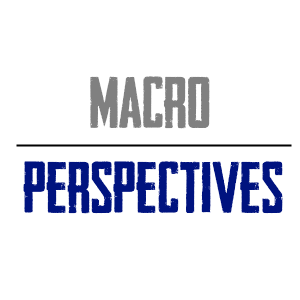I recently noted that heterodox economics is not so heterodox anymore.¹ There’s been a growing trend, especially on Wall Street, in the use of heterodox economic models and particularly Post-Keynesian Economic models. What’s the cause of this surge in popularity? I think it’s derived from two primary sources:
- Orthodox economic models largely ignore the financial system (though this has improved recently) and construct theoretical world views. For a market practitioner, whose world is comprised of financial balance sheets and income statements, the orthodox economic views just don’t have that much value. Theory, quite simply, has no place for the person whose job relies on understanding the world as it is.² Unlike a tenured professor, market practitioners don’t have the time to wait for some theory or experiment to play out. We need real-world understandings that are useful in understanding the world as it is and not the world as some economic theory thinks it might be.
- Heterodox models, Post-Keynesian in particular, are accounting models that properly model the stock flow consistent relationships in the financial system.³ Accounting is central to finance for obvious reasons. And constructing models of the accounting that reflect the relationships between households, firms and governments is crucial to being able to decipher how the economy impacts the financial markets. This is just flow of funds analysis. This means that Post-Keynesians use a model that understands basic empirical relationships within the financial system. For instance, when all those famous economists over the last 5 years said that banks might “lend out” their reserves leading to a risk of high inflation during QE, Post-Keyensians said this was wrong because it’s not stock-flow consistent. There is no transmission mechanism by which banks multiply or “lend out” their reserves to the non-bank public. This was just real-world accounting and ideas like this led to some very crucial understandings about how the economy and financial system would be impacted by policies like QE.
Interestingly, the most public use of a flow of funds analysis is inside the Federal Reserve itself. The Z.1 Flow of Funds report is, arguably, the most important piece of national data that the Central Bank releases each quarter. And it’s constructed in a stock-flow consistent framework that aligns nicely with the way Post-Keynesians view the world. So, the use of a stock-flow consistent framework isn’t just limited to Post-Keynesian academics and market practitioners. It’s slowly becoming more prominent inside the world’s most important Central Banks.
My guess is that this sort of modeling will become much more popular in the coming decades as people outside of Wall Street increasingly realize that a stock-flow consistent modeling approach is a very accurate reflection of the way the world actually works as opposed to the theoretical views espoused by much of orthodox economics. This doesn’t mean orthodox economic models will die or that we need to scrap the whole orthodox framework as some heterodox economists claim. It just means that the orthodox models will be improved by the inclusion of a broader set of tools.
¹ – I am not sure why some orthodox economists reject heterodox economics. It’s quite silly and narrow-minded, in my opinion, to reject something like a stock-flow consistent model which is little more than an accounting framework consistent with how the world actually works. Then again, most orthodox econ models didn’t take the financial system seriously until the GFC so maybe this isn’t all that surprising.
² – Microecon, where there is a good deal of excellent empirical work, also doesn’t have a big influence on market practitioners since its focus is generally too narrow to be of use.
³ – “Stock-Flow Consistent” refers to the relationship between balance sheets and income statements. Stocks are end of period balances such as total debt levels whereas flows are intra-period transactions such as spending.
Mr. Roche is the Founder and Chief Investment Officer of Discipline Funds.Discipline Funds is a low fee financial advisory firm with a focus on helping people be more disciplined with their finances.
He is also the author of Pragmatic Capitalism: What Every Investor Needs to Understand About Money and Finance, Understanding the Modern Monetary System and Understanding Modern Portfolio Construction.

